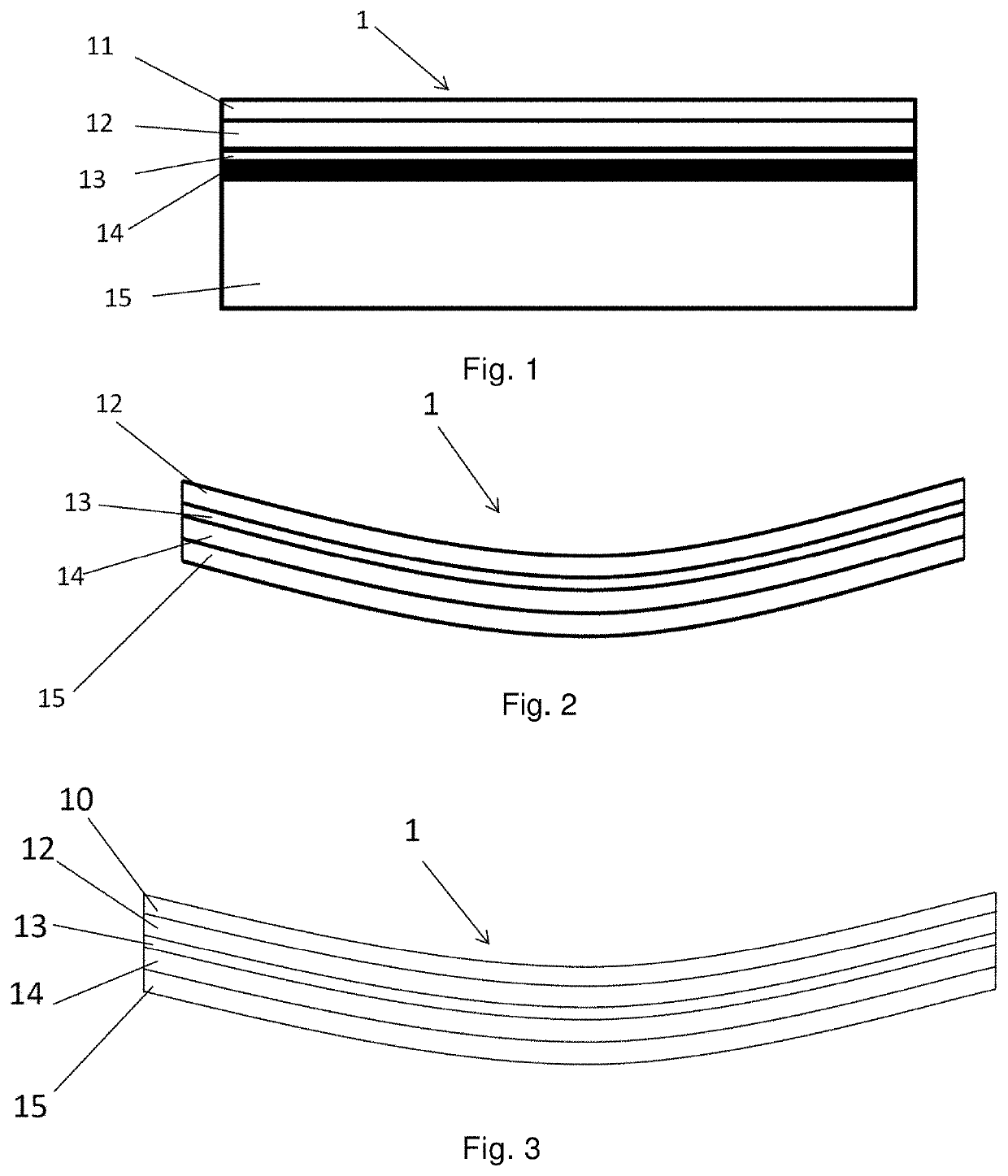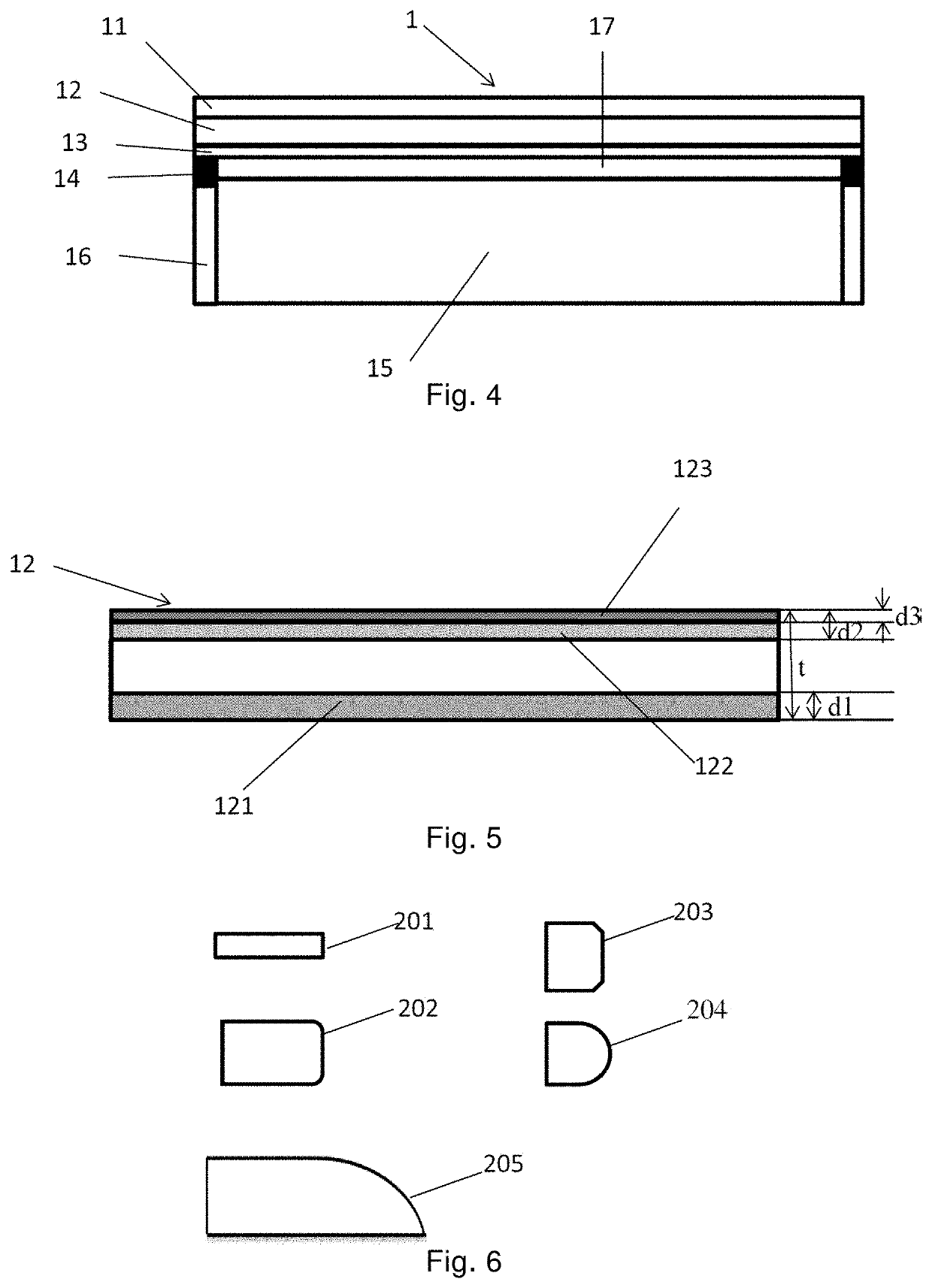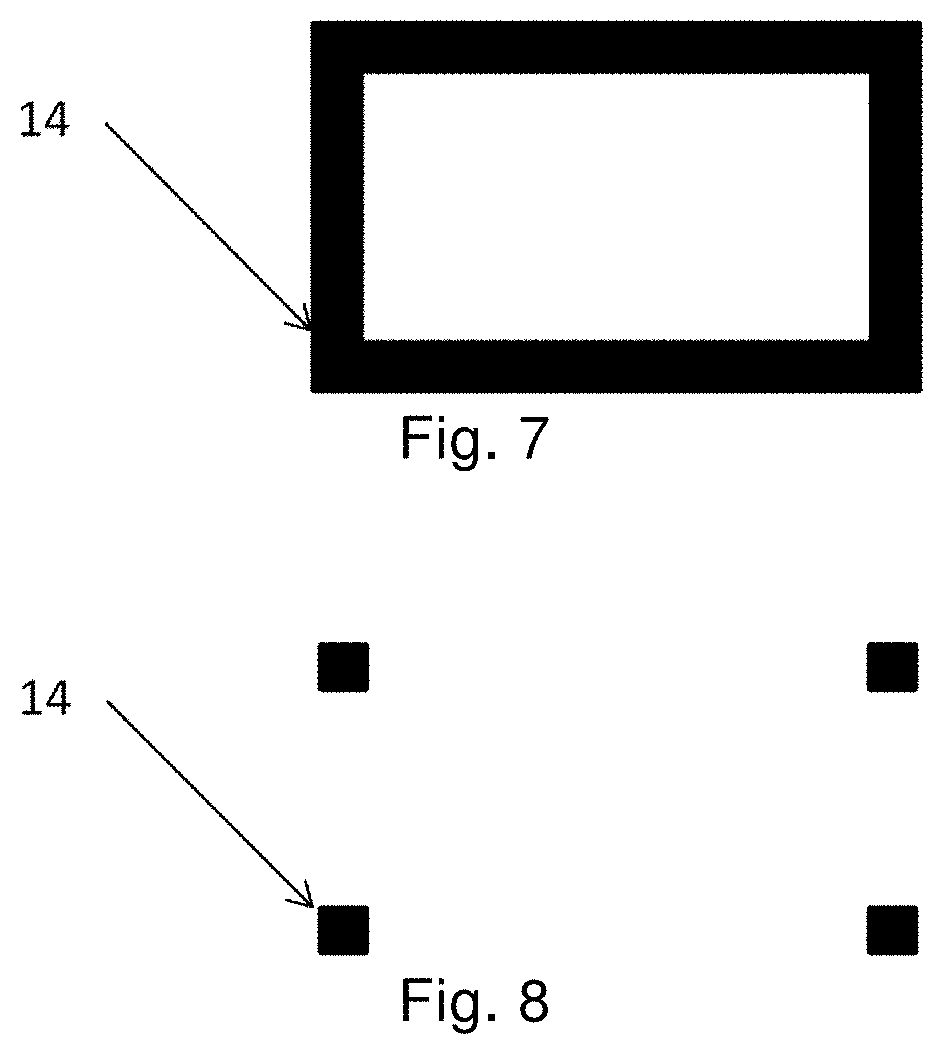Electronic device glass structure
a technology of electronic devices and glass structures, applied in the field of electronic device structures, can solve the problems of limited processing and handling of glasses with extremely low thickness, and achieve the effects of improving sensitivity and property, easy processing and cost control
- Summary
- Abstract
- Description
- Claims
- Application Information
AI Technical Summary
Benefits of technology
Problems solved by technology
Method used
Image
Examples
embodiment 1
[0051]As shown in FIG. 1, an electronic device structure 1 according to the present invention includes a functional device 15. In the present embodiment, the functional device 15 is a fingerprint chip sensors. An embedding layer 13 is located above the functional device 15. The embedding layer 13, for example, includes an organic or inorganic ink screen-printed layer or an organic plastic film layer. The embedding layer 13 is bonded with the functional device 15 by way of an adhesive material structure 14. In the present embodiment, the adhesive material structure 14 is an adhesive material layer, which includes different types of glues, plastic sealing materials and the like. The adhesive material layer may be completely applied onto the upper surface of the functional device 15 and the lower surface of the embedding layer 13 and bonds them together. That is to say, the functional device 11 and the embedding layer 13 are directly surface bonded together by the adhesive material lay...
embodiment 2
[0059]As shown in FIG. 3, an electronic device structure 1 according to the present invention includes a functional device, such as a flexible display screen 15. An embedding layer 13 is located above the functional device 15. The embedding layer 13, for example, includes an organic or inorganic ink screen-printed layer or an organic plastic film layer. The embedding layer 13 is bonded with the functional device 15 by an adhesive material structure 14. In the present embodiment, the adhesive material structure 14 is an adhesive material layer, which includes different types of glues, plastic sealing materials and the like. The adhesive material layer may be completely applied onto the upper surface of the flexible display screen 15 and the lower surface of the embedding layer 13 and bonds them together. That is to say, the flexible display screen 15 and the embedding layer 13 are directly surface bonded together by the adhesive material layer.
[0060]The electronic device structure 1 ...
embodiment 3
[0061]As shown in FIG. 4, in the present embodiment, the functional device 15 is a camera module. The adhesive material structure 14 is bonded to a support structure 16 surrounding the functional device 15, but not to the functional device 15 itself. Preferably, the adhesive material structure 14 has a frame-shape (see FIG. 7) so that a space for accommodating medium material is formed between the functional device 15 and the embedding layer 13 so as to accommodate various transparent materials, such as air, optically clear adhesives (OCA), optically clear resins (OCR) and so on.
[0062]Alternatively, adhesive material structure 14 might be in the form of a plurality of spots at edges. As shown in FIG. 8, the adhesive material structure might be four spots at four corners so as to bond the functional device 15 and the embedding layer 13 together. Similarly, in this case, the adhesive material structure 14 also forms a space for accommodating medium material between the functional devi...
PUM
| Property | Measurement | Unit |
|---|---|---|
| total thickness variation | aaaaa | aaaaa |
| total thickness variation | aaaaa | aaaaa |
| Ra | aaaaa | aaaaa |
Abstract
Description
Claims
Application Information
 Login to View More
Login to View More - R&D
- Intellectual Property
- Life Sciences
- Materials
- Tech Scout
- Unparalleled Data Quality
- Higher Quality Content
- 60% Fewer Hallucinations
Browse by: Latest US Patents, China's latest patents, Technical Efficacy Thesaurus, Application Domain, Technology Topic, Popular Technical Reports.
© 2025 PatSnap. All rights reserved.Legal|Privacy policy|Modern Slavery Act Transparency Statement|Sitemap|About US| Contact US: help@patsnap.com



